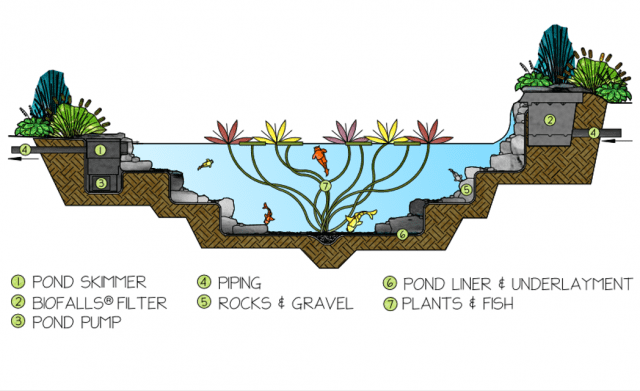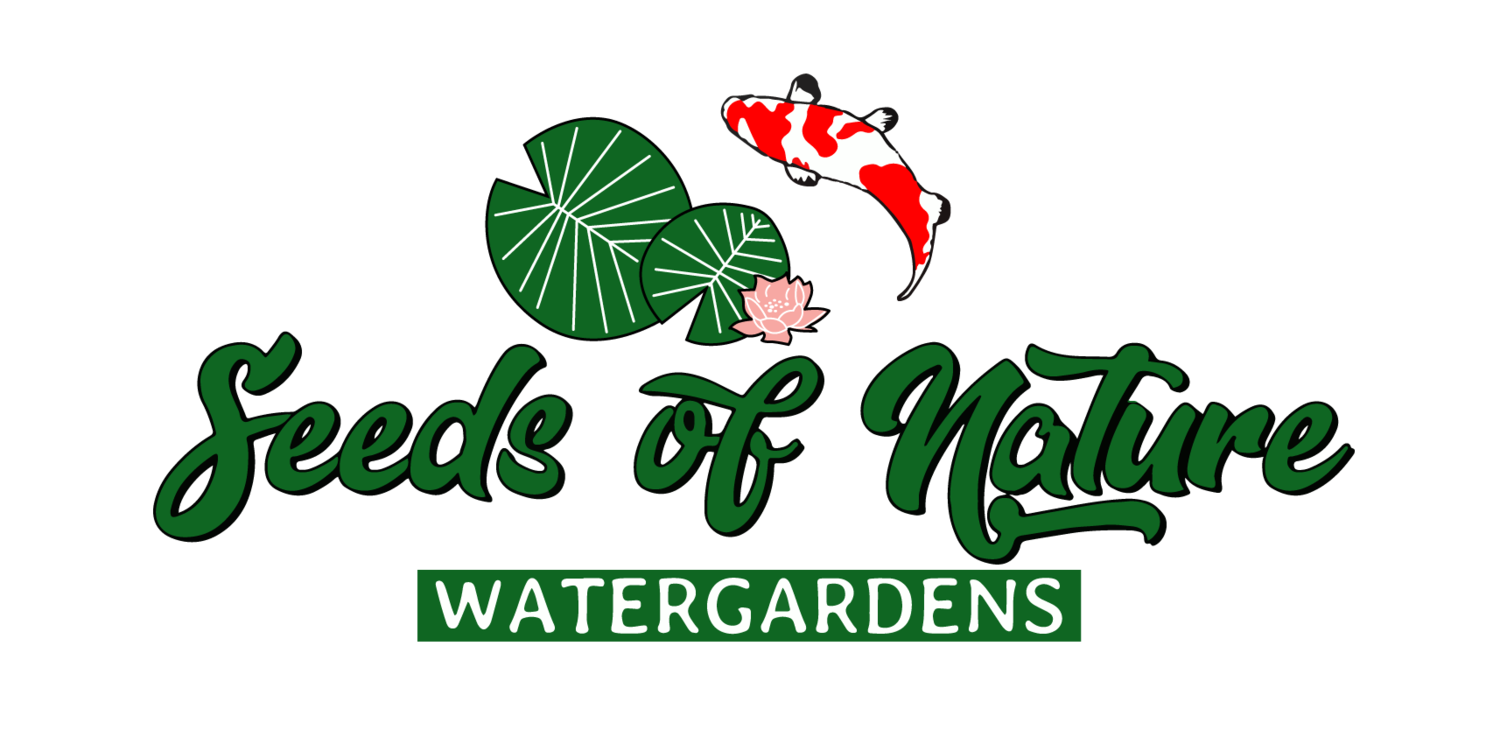An ecosystem pond is a type of pond that is designed to mimic a natural environment. This means that the pond is home to various plants, animals, and mechanical components. Each of which plays a vital role in the overall health of the pond.
Ecosystem pond constructions are becoming increasingly popular as they offer several benefits. They work with mother nature and not against her. This is because they use the natural process of using bacteria and plants to naturally filter the water. They are less maintenance and more beautiful than the traditional koi pond.
This blog post discusses how ecosystem ponds work and their main components. Read along to find out more.
Ever Wondered How Ecosystem Ponds Work?
Take A Look At How They Work & Their Main Components
Ecosystem ponds function like a natural environment, with different plants and animals working together to create a balanced ecosystem.
These water features utilize 5 essential components in harmony in order to create a natural system with minimal maintenance. These components are the filtration, circulation, rocks and gravel, plants, and fish. These are all necessary in order to create a balanced ecosystem.
One of the most important things to remember about an ecosystem pond is that it takes time to establish. It can take several months for an ecosystem pond to reach its full potential.
Here Are The Roles Of The Components Of Ecosystem Ponds
Each component of an ecosystem has a crucial role to play. Together, they create a balanced environment that can provide many benefits.
The components of an ecosystem pond construction include:
Rocks And Gravel
These provide homes for the bacteria that help complete the nitrogen cycle. They also give a natural aesthetic and allow planting places for plants. Rocks and gravel are also necessary to cover the EPDM liner and protect it from UV radiation which will erode and damage the liner. Koi also enjoy rooting through the gravel.
Filtration
Filtration is not only biological, but also mechanical. Biological filtration houses the majority of the bacteria that does the heavy lifting. This is typically seen in the biofalls, which houses filter pads and bioballs. The bacteria colonizes the pads and bioballs. As the water is circulated through the media the bacteria eats and absorbs ammonia and nitrites to complete the nitrogen cycle. The by product of ammonia is nitrates, which can be absorbed by plants. Mechanical filtration is the process of removing large debris commonly in the form of leaf debris that falls into the pond. We use skimmers to perform this action. The skimmer is part of the circulation and is where the pump is housed.
Circulation
The pump and pluming are generally the main components of circulation for most common pond sizes. The skimmer houses the pump, which draws water and leaf debris into a basket for easy removal. The skimmer also protects the pump from sitting on the bottom of the pond which reduces maintenance and increases the lifespan of the pump. The plumbing leads from the pump to the biological filtration like the biofalls. Then from there the biofalls spills into the waterfall and stream. This is extremely important because this provides aeration for not only the fish in the pond, but also for the bacteria that live in the filter. The bacteria need oxygen in order to survive. The more aeration the larger the colony of bacteria the pond can sustain.
Fish
Fish create nitrogenous waste like ammonia, which is then converted into nitrate and nitrogen, an available food source for plants. They also graze on algae and debris inside the pond. Without fish there is no consistent flow of food for the bacteria to thrive. Bacteria need a consistent food source in order to maintain their colony. Without a consistent colony you can have unsightly algae blooms.
Aquatic Plants
Along with being beautiful, plants help to oxygenate the water. They also consume excess nitrates and provide food and shelter for the fish. Without plants nitrates have no where to go, and will then feed algae blooms. They are an integral component in a successful and healthy ecosystem.

Water Feature Dream Book:
https://www.aquascapeinc.com/book/water-feature-dream-book/
Looking For An Ecosystem Pond Installation Company?
If you’re looking to install an ecosystem pond on your property, working with a professional with experience in this type of project is essential. Experienced pond builders will be able to help you choose the right location for your pond and select the best plants and animals for your particular ecosystem.
With their help, you can create a beautiful and sustainable pond that will provide many benefits for years. At Seeds of Nature Watergardens, our top goal is to ensure your complete satisfaction. So our ecosystem pond builders will work with you every step to ensure you’re satisfied with the results.
